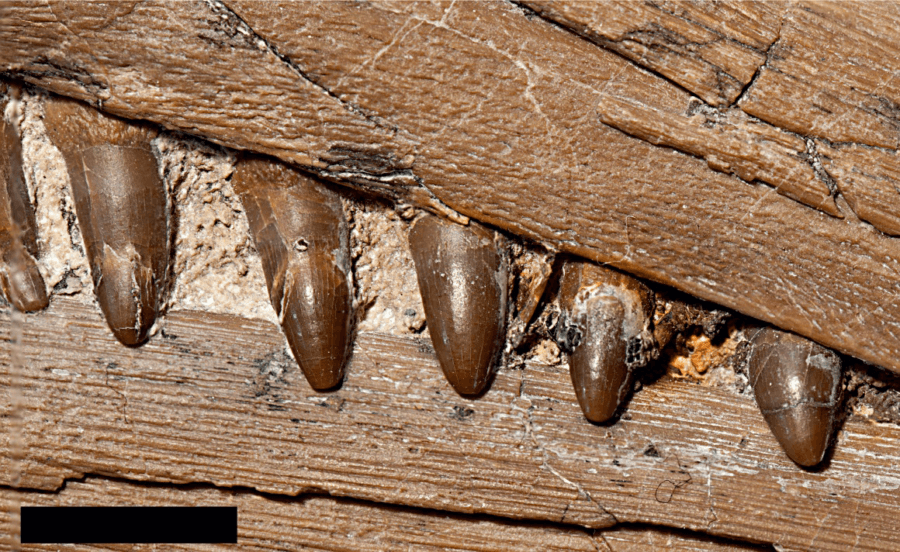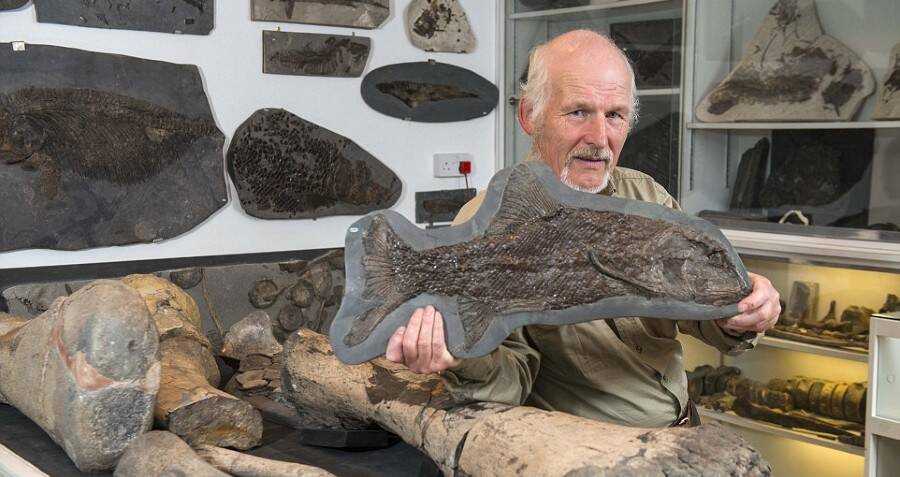British Plumber Stumbles Upon Mysterious ‘Sea Dragon’ Fossil That Could Rewrite Dinosaur History
The dinosaur’s scientific name is a combination of the Greek word “thalasso” for “sea” and “draco” the Latin word for “dragon,” a reference to its sea dragon-like qualities. The name “etchesi” was chosen to honor Etches’ discovery of the new species.

Jacobs et alThe “sea dragon” species had bug eyes, a deep ribcage, and a jaw full of razor sharp teeth as shown here.
“I’m very pleased that this ichthyosaur has been found to be new to science, and I’m very honoured for it to be named after me,” Etches said. “It’s excellent that new species of ichthyosaurs are still being discovered — which shows just how diverse these incredible animals were in the Late Jurassic seas.”
In addition to its bug eyes and large ribcage, the T. etchesi sea dragon measured just about 6.5 feet long, which is much smaller than your average ichthyosaur. They also had distinctly small flippers and smooth teeth that may have come in handy when catching small slippery prey like squid.
The species is the fifth ichthyosaur species that have been identified from the Late Jurassic period from bones excavated in the U.K.
“Thalassodraco etchesi is a beautifully preserved ichthyosaur, with soft tissue preservation making it all the more interesting,” said Jacobs. The animal’s remains were likely so well-preserved because of its location buried underneath the soft seabed.
The T. etchesi is set to be exhibited at the Etches Collection, a small museum in Dorset which displays many other prehistoric discoveries made by Etches.













